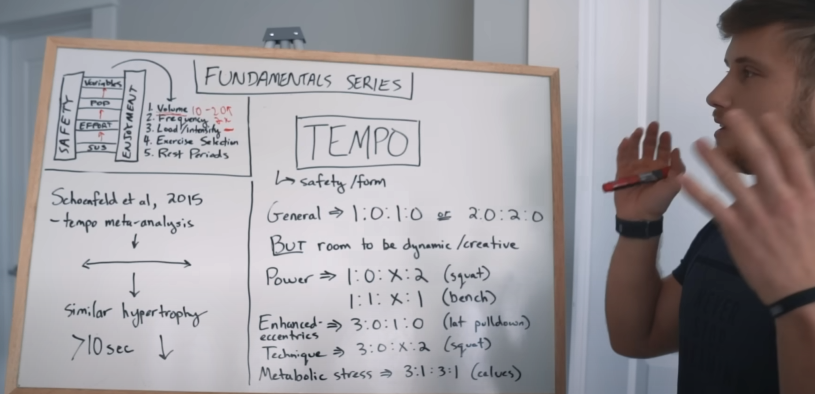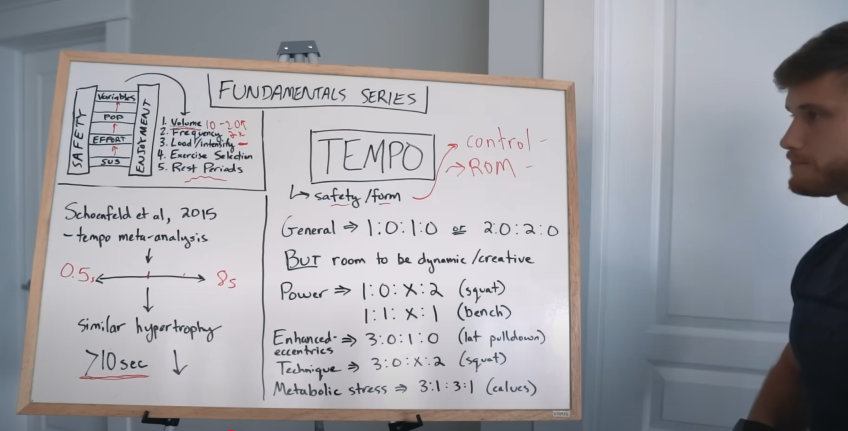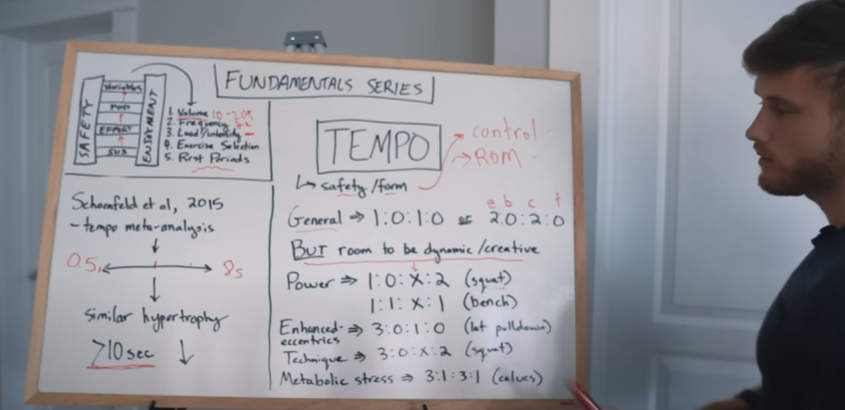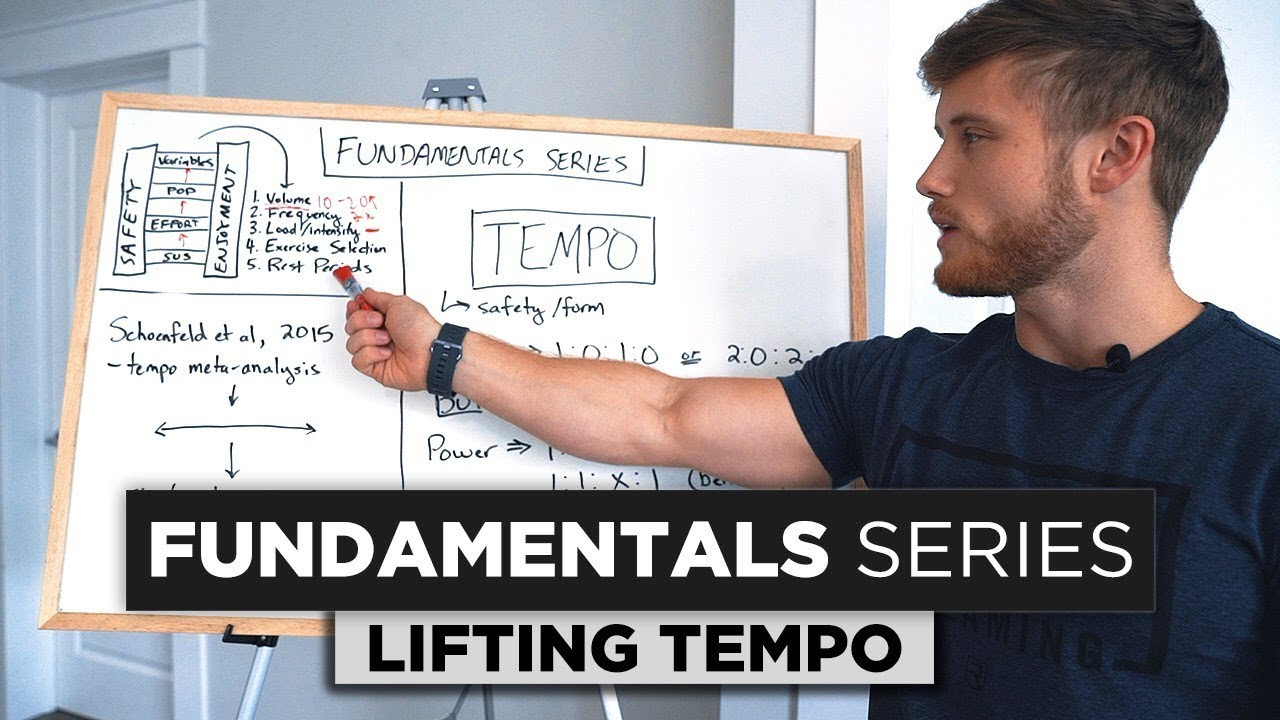By a bodybuilding coach and certified nutritionist with over 20 years of experience
In the world of strength training, we often obsess over sets, reps, rest intervals, and exercise selection. But one variable that gets overlooked—yet can fine-tune your progress—is lifting tempo. How fast or slow you lift weights can influence training outcomes like hypertrophy, strength, control, and even injury prevention.
While tempo isn’t the most critical factor in your workout routine, it plays an important role in maximizing form, safety, and the effectiveness of each repetition. In this article, we’ll break down what tempo really is, how to apply it based on your goals, and when to slow down or speed up your lifts.

What Is Lifting Tempo?
Lifting tempo refers to the speed at which you perform each phase of a rep: the lowering (eccentric), pause at the bottom, lifting (concentric), and pause at the top. It’s typically written as a four-number sequence. For example, a 2-0-2-0 tempo means:
- 2 seconds lowering the weight
- 0 seconds pausing at the bottom
- 2 seconds lifting the weight
- 0 seconds pausing at the top
For instance, in a dumbbell chest press, you would lower the weights for two seconds, immediately press them up over two seconds, and repeat without any pauses.
Why Does Tempo Matter?
Although research shows that tempo is less influential than total volume or progressive overload, it’s still a valuable tool. A landmark meta-analysis in Sports Medicine (Schoenfeld et al., 2014) concluded that rep durations between 0.5 to 8 seconds led to similar hypertrophy outcomes, provided that sets were taken close to failure.
However, tempos slower than 10 seconds per rep often reduce hypertrophy, likely because the load has to be lowered so much that mechanical tension is compromised.
Bottom line: Super-slow training isn’t superior and may even be counterproductive. But moderate variations in tempo can serve distinct purposes in your programming.

The Safety and Form Connection
Controlled tempo helps maintain proper lifting mechanics. When lifters rush reps—especially the eccentric phase—they often sacrifice form, increasing injury risk. For beginners or those coming back from injury, focusing on a moderate, consistent tempo promotes better joint control and helps build foundational strength.
Even for advanced lifters, emphasizing tempo—particularly during the eccentric—can enhance focus, prevent ego lifting, and improve muscle recruitment.
Recommended Tempos for Different Goals
Let’s break it down by objective:
1. For General Hypertrophy
If your goal is to build muscle efficiently without overcomplicating your training, a moderate tempo like 2-0-2-0 or 1-0-1-0 is ideal. It allows for enough time under tension without dragging out the set unnecessarily.
- Why it works: Smooth control, full range of motion, and consistent muscular tension.
- When to use it: Most compound and isolation exercises during volume-focused phases.
2. For Power and Explosiveness
When training for speed or strength, the emphasis shifts toward fast, explosive movements on the concentric (lifting) phase. You’ll often see tempos like 2-0-X-0, where “X” denotes maximum intent to move the weight quickly.
- Example (Squat): Lower in 2 seconds, explode up (as fast as possible), reset at the top.
- Benefit: Teaches the nervous system to generate force quickly, which is key for strength athletes and athletes in general.
Note: You’ll rarely move truly fast under heavy loads, but it’s the intent that matters.
3. For Eccentric Overload
You’re stronger during the lowering phase of a lift, and slowing it down can create extra mechanical tension. Using a tempo like 3-0-1-0 emphasizes eccentric strength.
- Example (Lat Pulldown): Pull down in 1 second, then slowly return over 3 seconds.
- Application: Ideal for exercises where you want to maximize stretch under load.
- Benefit: Promotes muscle damage and potentially enhances hypertrophic signaling.
You can also use lifting partners or resistance bands to assist during the concentric, letting you overload the eccentric with heavier loads.
4. For Technical Precision
When trying to correct movement flaws—like collapsing in the bottom of a squat—slowing down the rep helps engrain proper motor patterns.
- Example (Squat): 3-0-X-2 — slow descent, explosive rise, reset and breathe at the top.
- Use case: Practicing staying upright in squats or controlling the bar path on bench press.
Note: Avoid prolonged pauses unless your goal is positional strength (e.g., paused squats), as long pauses can limit work capacity.

5. For Metabolic Stress and Muscle Burn (The “Pump”)
While the debate continues around how much metabolic stress contributes to hypertrophy, there’s no denying that pump-style training can enhance muscle-mind connection and improve nutrient delivery.
Try tempos like 3-1-3-1, especially on smaller muscle groups like calves, biceps, or rear delts.
- Example (Calf Raise): Lower over 3 seconds, pause at the bottom for 1 second, rise for 3 seconds, squeeze at the top for 1.
- Warning: These sets will burn. Don’t chase ego weights here—light to moderate loads are enough.
When Slow Tempos Backfire
Although slowing down the eccentric phase has benefits, excessively long reps can be counterproductive:
- They limit the amount of weight you can lift
- They reduce mechanical tension
- They may prolong fatigue without added hypertrophic benefit
As a general rule, avoid exceeding 8 seconds per rep. Beyond that, you’re likely sacrificing load and efficiency.
Key Takeaways for Smart Tempo Use
- Consistency matters more than complexity: You don’t need to memorize fancy tempo codes for every exercise.
- Control is king: Prioritize controlled eccentrics and intentional concentrics.
- Adjust based on intent:
- Use moderate tempo for most training
- Use explosive intent when training for power
- Use slow eccentrics to build tension or refine technique
- Use pump tempos for isolation work
Practical Tip for Most Lifters
If you’re not sure where to start, stick with a 1-0-1-0 or 2-0-2-0 tempo for most movements. It’s simple, safe, and effective. As you become more advanced, experiment with tempo manipulation to target weak points or add variety without changing your exercise selection.
Final Thoughts
Tempo isn’t the most critical variable in hypertrophy, but it does offer a useful lever for tailoring your training. Whether you’re trying to build more muscle, increase strength, or sharpen technique, adjusting your rep speed can give you an edge. Just remember: quality movement and progressive overload will always be the foundation of effective training.
Now go hit the gym—and don’t just count your reps, make your reps count.



